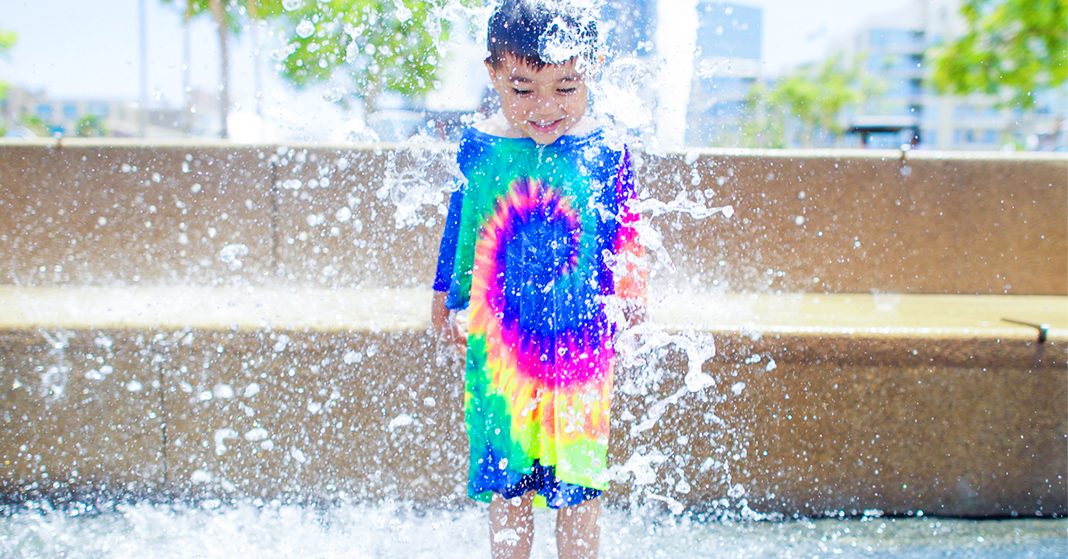
Water—besides its obvious benefits for cooling off during those hot summer days—is a wonderful sensory experience. It’s perfect for splashing, stirring, pouring, and squirting . . . and it offers an ideal opportunity to teach science concepts too! Here are some science and water play ideas for summer, doable with simple supplies that you have around the house.
Science Play and Volume Measurement
Perhaps you have a pool in your backyard, your neighborhood, or your local YMCA or recreation center. If not, an inflatable pool or a large tub filled with water works just as well for cooling off! Offer your kids a selection of measuring cups, plastic beakers, eye droppers, and water bottles with measurements marked on them.
How many smaller cups of water does it take to fill a larger one? When you place an object into a bowl that’s already full of water, what happens? Explore the idea that the volume of the displaced water equals the volume of the object you put in.
Introduce a scale into the mix, and let your kids weigh the water! They’ll be practicing math and measurement skills, all while enjoying water play outdoors.
Physics and Water Play
If you know of a stream or creek near where you live, you can teach your children a lot about physics, including concepts such as flow and motion. However, you can engage in similar science play using a hose or sprinkler in your backyard!
Ask your kids questions like these:
- Why does the water arc downward when you hold up the hose?
- How many minutes does it take to fill up a bucket?
- When you swirl your hand around and around in the water in a bucket or tub, what happens? Why does the water keep moving even when you take your hand out?
Younger kids will simply be fascinated with the way water gushes, drips, sprays, and ripples. Older children may be able to grasp some of the scientific reasoning behind these summer activities.
Biology and the World of Water
Do you have a lake or pond nearby? Perhaps there’s a creek in a neighborhood near you, or a lake within a reasonable driving distance. On a hot summer’s day, take a picnic along and visit your favorite freshwater spot.
Ask your kids to look for life in, on, and around the water. What do they see? Water skater insects, ducks, minnows, larger fish, tadpoles, turtles? Explain a few basics about the lake or pond biome, using a BJU Press science text or biology book.
What does each creature eat? How is its life cycle linked to those of the other living things in the water? Older children may be interested in learning about the different zones of the lake, including the littoral, limnetic, and profundal zones.
When your kids get their hands and feet into the water, they won’t just be cooling off— they’ll be learning too!
• • • • •
Rebecca is a work-at-home freelance writer, novelist, wife, and the mom of two bright-eyed little ones. She credits her success in writing and her love of books to her own mom, who homeschooled three kids from pre-K through high school.